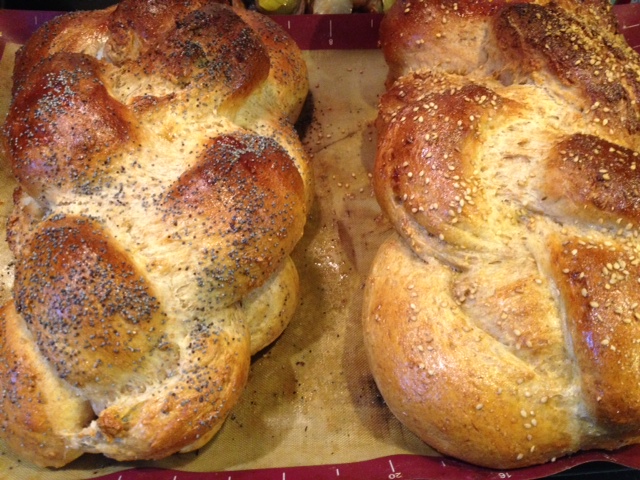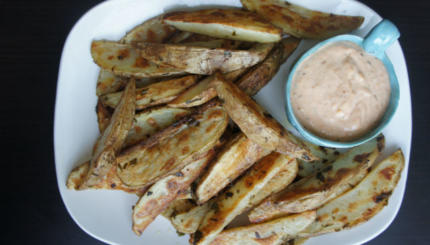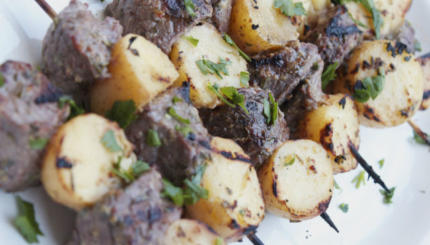I went to Jewish day school from pre-school all the way through 12th grade, and looking back, there were definitely some lessons that had a much bigger impact than others. Perhaps my most enduring lesson is one I got way back in kindergarten at Solomon Schechter: challah baking. The teachers guided us through the recipe, and eventually gave each child a small mound of dough to shape into a challah that we took home at the end of the day. We also took home a piece of paper with the recipe typed on it, and it has been my go-to challah recipe ever since.

Since kindergarten I’ve made this challah hundreds of times. I’ve made it on three continents, at four universities, and in half a dozen homes. It never disappoints. I hope it brings as much doughy goodness to your table as it has to mine. Shabbat shalom!
The Nosher celebrates the traditions and recipes that have brought Jews together for centuries. Donate today to keep The Nosher's stories and recipes accessible to all.
Ingredients
2 packages yeast (about 2 Tablespoons)
1/2 cup very warm water
1 teaspoon sugar
5 eggs
3/4 cup sugar
1/2 cup oil
1 1/2 cups water
1 teaspoon salt
8-10 cups flour
1 teaspoon cardamom (optional)
1 Tablespoon honey (optional)
2 Tablepoons maple syrup (optional)
1 Tablespoon vanilla (optional)
1 cup raisins (optional)
1 beaten egg
Poppy or Sesame seeds
Directions
Dissolve the yeast in the warm water from the tap with 1 teaspoon sugar. Let sit for 10 minutes.
Meanwhile, beat eggs with sugar. Add oil, water and salt. If you'd like a sweeter challah, add honey or maple syrup. For a little spice in your challah, add cardamom and vanilla.
Mix yeast mixture into egg mixture, using beaters, your hands, or the dough hook on a standing mixer. Add 2 cups of flour at a time, mixing between additions (feel free to substitute whole wheat flour for up to 3 cups of regular flour). When the dough gets thick and sticky, turn it out onto a floured counter and knead the flour in by hand. Stop kneading when it seems like the dough will not accept any more flour (usually about 9 cups of flour). Put the dough back in the bowl and cover loosely with a kitchen towel. Let sit for at least 4 hours, up to 8 hours.
After the dough has risen for at least four hours, punch it down, and knead in raisins if you'd like to us them. Then divide the dough into three sections. Each section will be a loaf. Braid or shape the challot however you like. (The Shiksa has a wonderful and very comprehensive guide to braiding and shaping challah dough here.)
Once the loaves are braided or shaped, place them on cookie sheets, and cover loosely with a towel. Allow to rise at least another half hour, preferably an hour. Preheat the oven to 350F. Then, beat an egg, and brush it lightly on each challah, making sure to get the egg wash in all the crevices of the loaf. Sprinkle the tops with poppy or sesame seeds if you wish. Bake the challot for 30-40 minutes, or until they are golden brown on top, and are making your kitchen smell like heaven.
challah
Pronounced: KHAH-luh, Origin: Hebrew, ceremonial bread eaten on Shabbat and Jewish holidays.

Help us keep Jewish knowledge accessible to millions of people around the world.
Your donation to My Jewish Learning fuels endless journeys of Jewish discovery. With your help, My Jewish Learning can continue to provide nonstop opportunities for learning, connection and growth.
Shabbat
Pronounced: shuh-BAHT or shah-BAHT, Origin: Hebrew, the Sabbath, from sundown Friday to sundown Saturday.

Help us keep Jewish knowledge accessible to millions of people around the world.
Your donation to My Jewish Learning fuels endless journeys of Jewish discovery. With your help, My Jewish Learning can continue to provide nonstop opportunities for learning, connection and growth.


